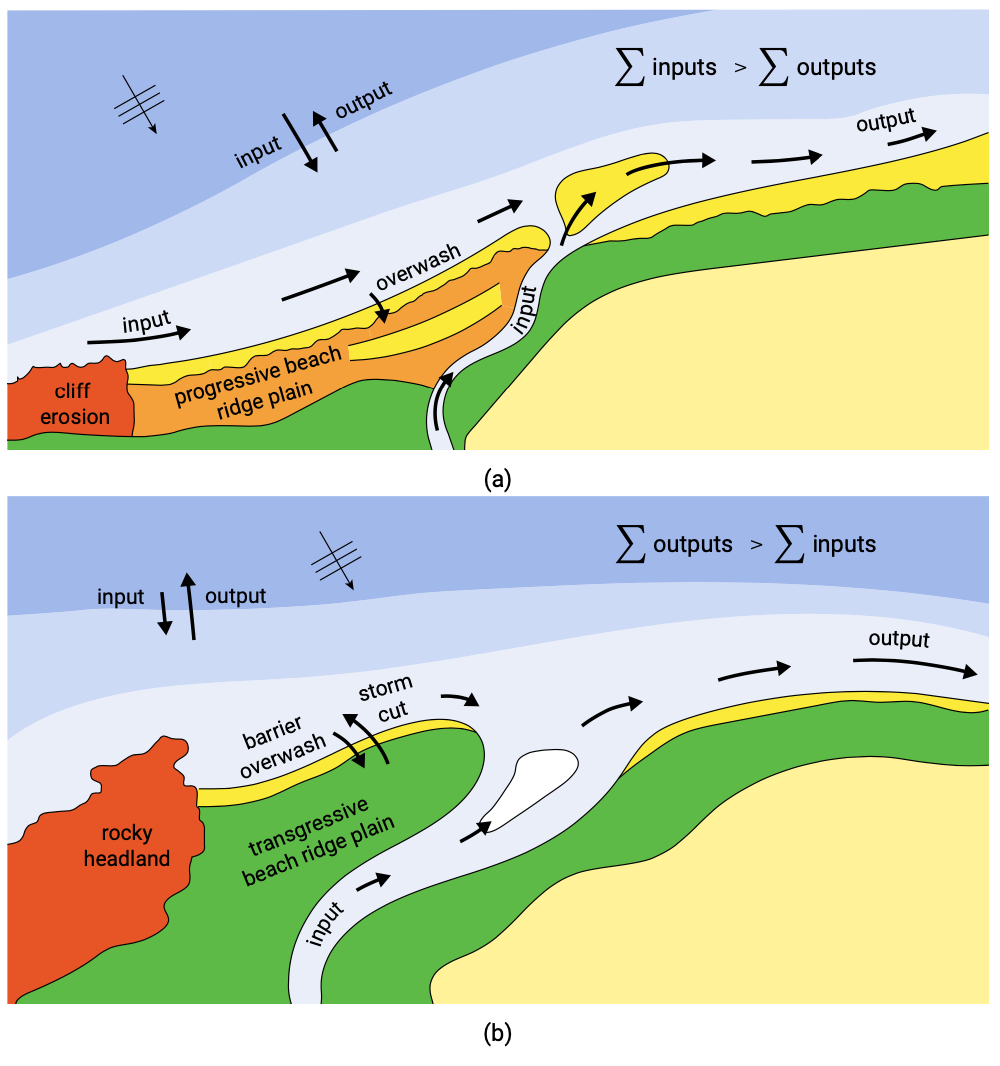1.5.2: Coastal morphodynamics
- Page ID
- 16247

In Sect. 1.4.3 we had already concluded from continuity considerations that coastal changes occur in the case of gradients in sediment transport rates. This of course not only holds for the coastal stretch considered there, but for coastal systems in general. Consider for instance the sediment budgets along the estuarine and deltaic coasts of Fig. 1.16. Changes in the morphology of these systems depend on the spatial and temporal fluctuations in the sediment transport rates. In terms of a continuity equation or mass balance:
\[\dfrac{\partial z_b}{\partial t} + \dfrac{\partial S_x}{\partial x} + \dfrac{\partial S_y}{\partial y} = V\]
where
| \(z_b (x, y, t)\) | bed level above a certain horizontal datum | \(m\) |
| \(S_x (x, y, t), S_y (x, y, t)\) |
sediment transport rates per m width of flow in the horizontal \(x-\) and \(y-\) direction, including the effect of porosity |
\(m^3/m/s\) |
| \(V(x, y, t)\) |
sink or source term per unit area representing local sediment gains and losses, often taken as zero |
\(m^3/m^2/s\) |
If the net sediment flux into a certain area is negative, meaning that the outgoing sediment flux is larger than the incoming one, the bottom will supply the sediment deficit (we assume that the bottom is erodible). In that case a lowering of the bottom occurs (erosion). However, while the morphology changes, the waves and tides – being dependent on the water depth – respond to the adjusted bed level. As a result the sediment transport rates change and this again affects the development of the morphology. Apparently, a feedback (named morphodynamics) exists between hydrodynamic processes and morphology. The coupling between the two is provided by sediment transport:
Coastal morphodynamics is the mutual adjustment of morphology and hydro-dynamic processes involving sediment transport
The morphodynamic feedback can be both positive and negative. In the case of negative feedback the adjustment process continues until a new situation is reached where no changes occur. An example is the response of a straight coast with normally incident waves to a beach nourishment (see also Example 8.4). Waves will disperse the sediment until eventually the coastline orientation is such that the transport gradients are zero again (hence, the end result is a straight coast again). Negative feedback thus is a stabilizing process that makes sure that after a disturbance a new equilibrium develops. Note that in practice, an equilibrium is never static since the external conditions are also changing during the adaptation process.
Positive feedback is exactly the opposite from negative feedback in that the system is pushed away from equilibrium. An example is a small disturbance of the bed, which itself generates the sediment transport convergence that makes sure that the disturbance grows larger and larger, forming a larger scale feature like a shoal.


